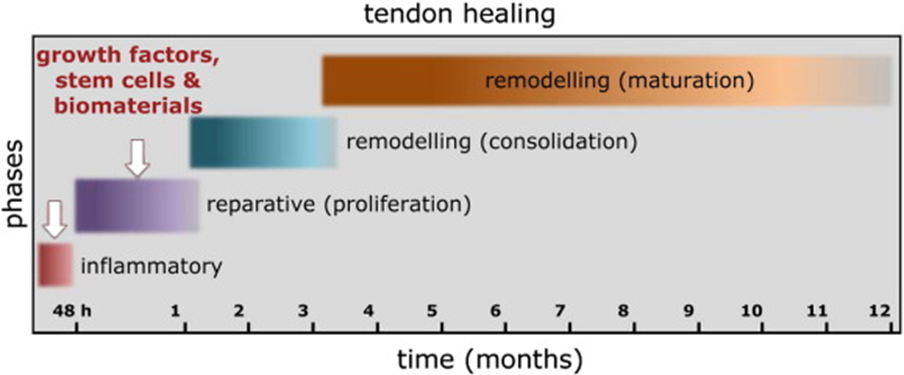Tendinitis or tendinosis can occur in tendons exposed to overuse conditions (e.g., runners, racquet sports, golf, etc) or intrinsic tissue degeneration (e.g., age-related degeneration). The healing potential of a torn or pathologic tendon varies depending on anatomic location (e.g., Achilles vs. Rotator cuff). Although healing occurs to varying degrees, in general healing of repaired tendons follows the typical wound healing course, including an early inflammatory phase, followed by proliferative and remodeling phases.
Inflammatory phase:
The response to tendon injury can be divided into three overlapping stages. In the inflammatory stage, which typically spans a few days, the wound site is infiltrated by red blood cells, white blood cells (leukocytes), and platelets equipped with important growth factors.
Proliferative Phase:
The second stage, known as the proliferative or repair stage, begins roughly two days into the injury response. This phase of healing is characterized by profuse cell reproduction and granulation tissue growth.
Remodeling Phase:
This phase begins 1–2 months after injury and can last more than a year. The primary purpose of the remodeling phase is the formation of new epithelium and scar tissue; however the tissue never completely regains the biomechanical properties it had prior to injury.

Written By: Dr. Nicole Aho, PT, DPT

Comments